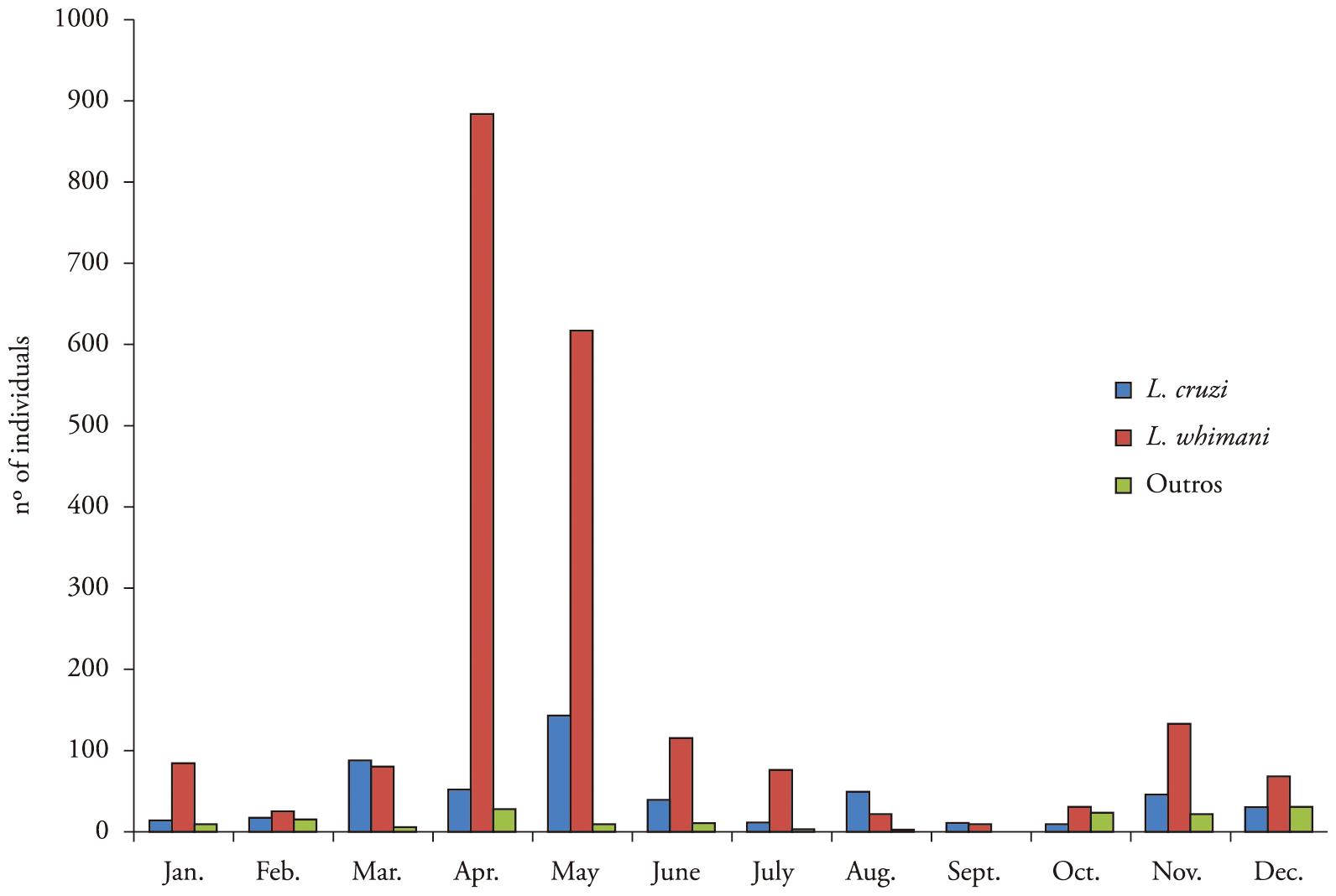Visceral leishmaniasis (VL) is caused by Leishmania (L.) infantum chagasi in the Americas. In Brazil, it is transmitted by sandflies of the species Lutzomyia longipalpis and L. cruzi, and dogs are the main domestic reservoirs. The aim of this study was to analyze data relating to VL transmission in Jaciara, state of Mato Grosso, and discuss vector distribution, domestic reservoirs, and human cases that occurred between 2003 and 2012. The data for analysis were obtained from the Notifiable Diseases Information System (human), the State Health Department's Environmental Monitoring Agency (canine data) and the State Health Department's Entomology Laboratory (sandfly data). Over this period, Jaciara had 19 autochthonous human cases (12 males and seven females), with one death 2,273. Out of the 7,545 dogs tested by enzyme immunoassay and indirect immunofluorescence were positive. The sandflies collected comprised 5,015 individuals belonging to 24 species, with a predominance of L. whitmani followed by L. cruzi. The results showed that the parasite has frequent circulation and that the vector L. cruzi is widely distributed over all months, thus suggesting that transmission may occur at any time of the year.
Visceral leishmaniasis (VL); Lutzomyia cruzi ; Lutzomyia whitmani ; Canine Reservoir


